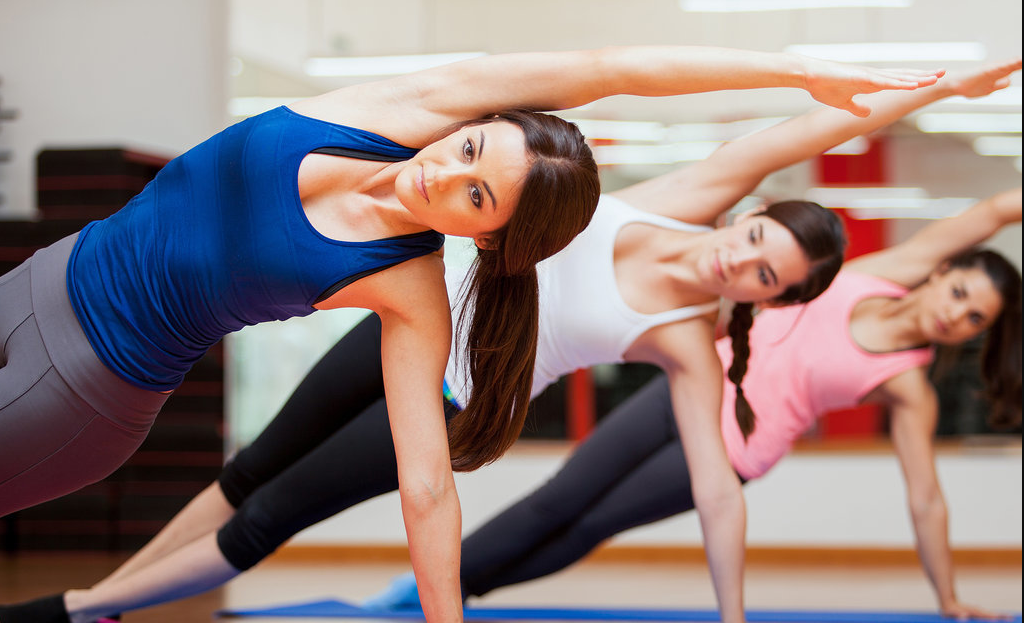Yoga
If your yoga passion is just beginning, then some things may seem incomprehensible and confusing to you. Presented in the article yoga postures for beginners, which will be clearly demonstrated in the pictures, will help not only to master the basis necessary for all beginners, but also provide accelerated progress in this practice useful for spirit and body.
The main thing – do not forget about That the key to mastering all the poses is deep breathing and lack of tension in the body. Do not pressure yourself to do something that you are not ready for!
10. Tadasana – Pose of the Mountain
Tadasanu must be mastered, as it is the basic pose for all exercises that develop your ability to balance. From the side it may seem that you are just standing, but in fact the essence of this position is to touch the ground with all the corners of the foot simultaneously, that is, evenly distribute the weight over the surfaces of both feet. As soon as you manage to do this, raise your hands up, and stretch, stretching the body after the palms. Not sure if you’re doing it right? Close your eyes – if you do not swing, then your balance in this pose is perfect.

9. Balasana – Child’s Pose
A useful posture, which is worth remembering for cases when you will experience difficulties with some exercise of increased difficulty. To accept this position, sit on your knees and tilt your head to the floor. You can connect your hands behind your back at the level of the waist or drop them along the sides. The main thing in this position is the opportunity to restore strength, to correct breathing and to relax.
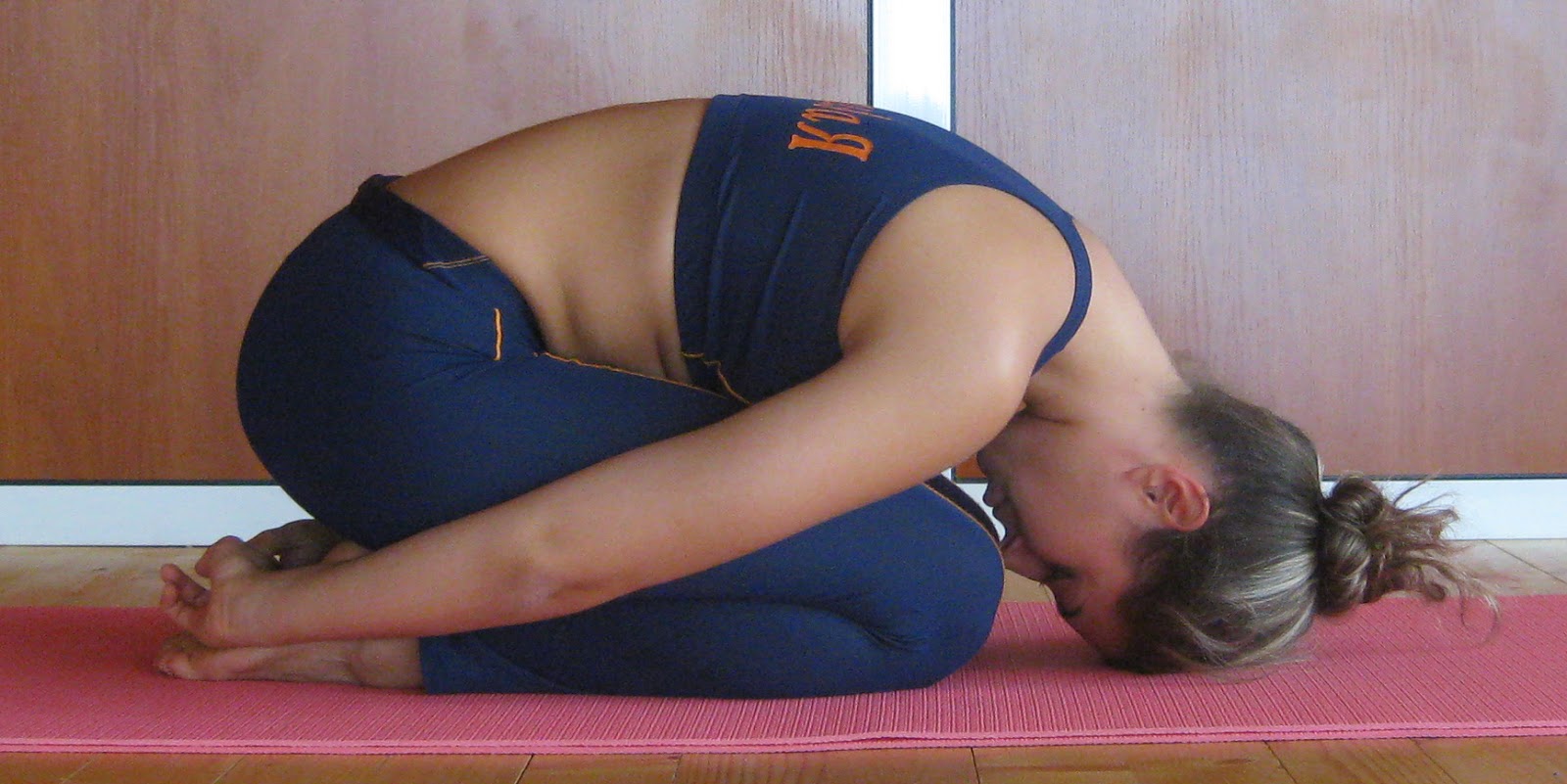
8. Adho Mukho Shvanasana – Pose of the Descending Dog
As a beginner, you can consider this pose difficult, and this is normal. To master this posture, you need to start in the posture of the Staff, or, more simply, take an emphasis lying down. After that, you need to raise the lower back up, while trying to touch the heels of the floor, bending in the lower back so that your chest is at the level of the knees. With proper performance, you will feel how all the joints and ligaments of your body are stretched and stretched, starting from the legs and ending with the neck.

7. Bharmanasana – Pose of the Table
Above it is mentioned how you can take the pose of the Descending Dog from the Staff posture. You can also start it and another exercise, which will be later in the article, from Bharmanasana. To accept the pose of the table, stand on all fours, straighten your back and put your knees and palms right under your buttocks and shoulders.
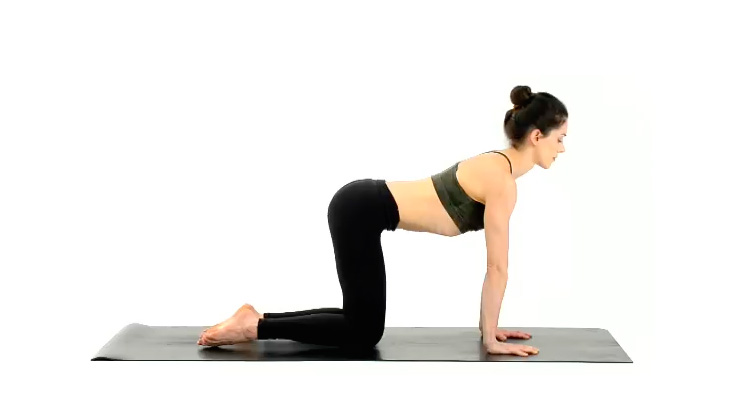
6. Bithilasana – Pose of the Cow
Using Bharmanasana you can make an excellent stretch of the ligaments of the back, passing from it to Bitilasana and the next pose. To accept the Cow’s Pose while in Bharmanasana, arch your back and lift your head and chest up. You should feel how the ligaments are stretched all over the body.

5. Marjarianasana – Pose of the Cat
This pose also perfectly suits as an exercise for stretching the spine, and you can go directly to it from Bitilasana or Bharmanasana. Curl the back up, from the coccyx to the shoulders, and tuck your chin into the collarbone to form a truly perfect arch.

4. Staff posture
One of the most practical ways to get yourself closer to doing an exercise that is not yet available to you is improving physical fitness. The posture of the staff, it’s an emphasis lying down, is one of the best and simplest methods to increase your strength and endurance. It is recommended to take this position from Bharmanasana or descending dog posture, most importantly – make sure that your hands are just under your shoulders. If you are too difficult to hold in this position, you can lean on your knees to ease the load.

3. Vrksasana – Pose Tree
This is one of the easiest equilibrium positions in yoga, it increases the stability of your torso and leg area. Start with Tadasana, and then lift one of your legs and lean it against the side of your shin or thigh. Never put a foot on the side of the knee, as this harms the knee joint. Lean your hands against each other and keep your hands at chest level or above your head. Keep balance while strengthening the muscles of the hips.
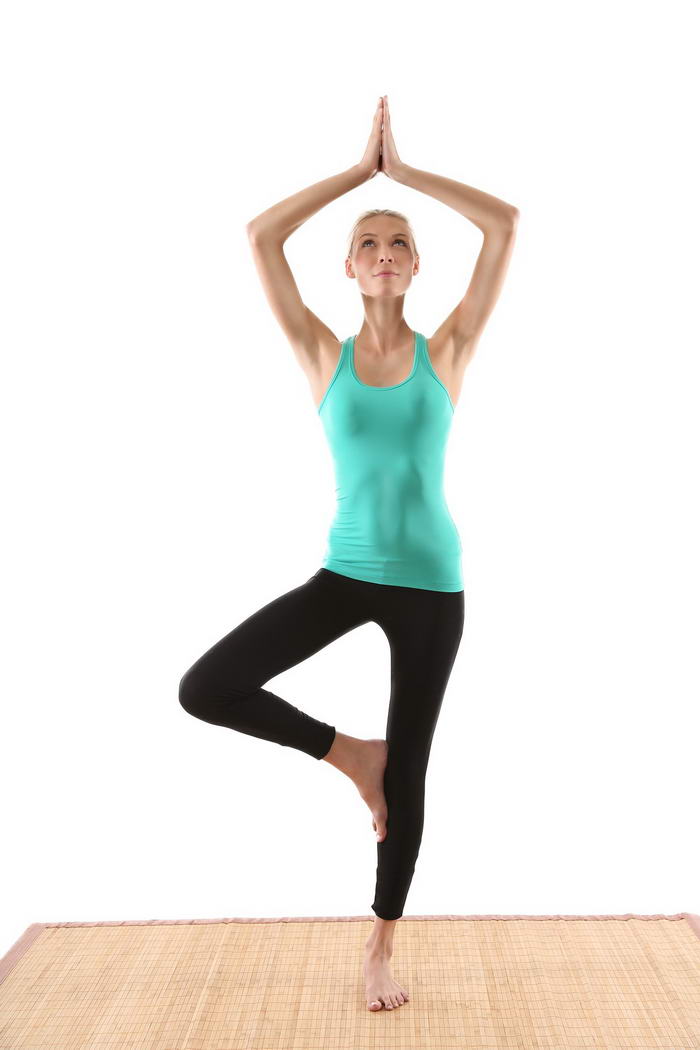
2. Virabhadrasana II – Pose of the Warrior II
This pose may seem simple, but having stood in it for a long time, you will feel that it is very difficult to maintain this position for a long time. You can start this exercise in many ways, but the easiest one is: start with Tadasana, place your legs wide, to the very ends of the rug, then direct one of the feet towards the edge of the rug, and the other – perpendicularly, then bend the front leg, Extend your arms parallel to the ground and look at the front arm. Try to stabilize your position in Virabhadrasana II.
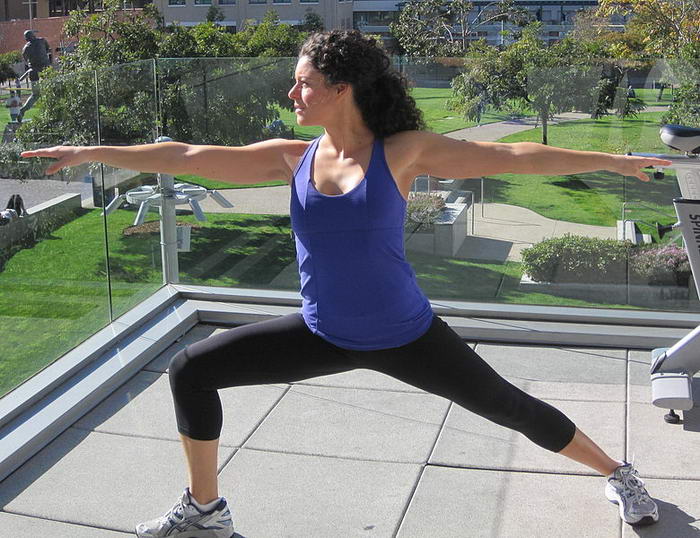
1.Savasana – Pose of the Corpse
When you have finished your yoga class, you need to relax and rest. The ideal position for this is the Pose of the Corpse, which will allow you to achieve an almost meditative state. Lay down on the rug and relax the whole body, letting the legs just lie and taking your hands away from the body, palms up. Align the breath and clear the mind to feel relief if you do it right.



